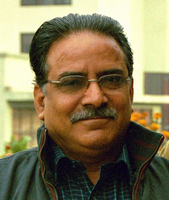Nepal's peace process, initiated with the People's Movement of April 2006, led to a historic process of political reconciliation. After a Comprehensive Peace Agreement with the Seven Party Alliance that spearheaded the movement, the forces of the Communist Party of Nepal-Maoist (CPN-M) pledged to place their arms under U.N. supervision and explore political avenues for voicing their demands. In April 2008, voters went to the polls to elect members of the Constituent Assembly (CA), the Nepalese parliament. Both the process and results of the election impressed and surprised observers across the globe. The CPN-M emerged as the single largest party in parliament after a decade-long guerilla struggle against the monarchy and rival political parties. The elections not only paved the way for integrating Maoists into the political mainstream, but also culminated in the abolition of the century-old monarchy. Nepal's journey towards institutionalizing a democratic republic had begun. This, though, is where the fairy tale ended and hard political realities dawned in Nepal. Outward manifestations of the country's struggle with both the Maoists and democracy have undoubtedly changed, but the struggle itself is far from over. New challenges have appeared to threaten the country's political stability, leaving its democratic transition walking on a razor's edge.
Nepal’s Maoists Have Yet to Forsake Violence, Embrace Democracy

